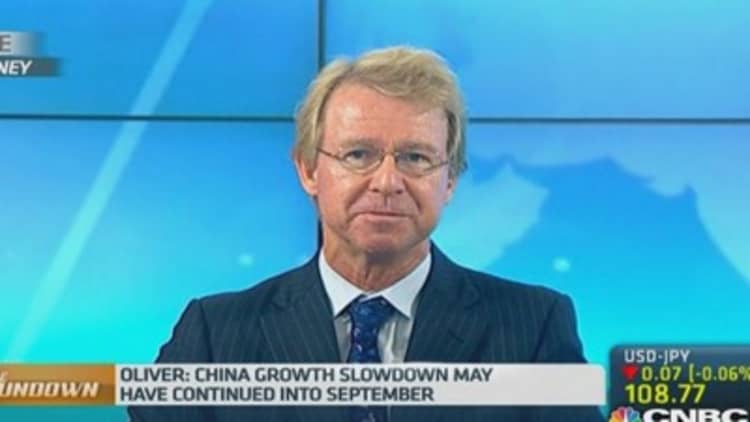China's sudden deployment of its Standing Liquidity Facility (SLF) last week to inject targeted stimulus funds into its biggest banks to boost the slowing economy could also signal an impending period of currency weakness.
While People's Bank of China (PBOC) officials have said that slower growth is the "new normal", Premier Li Keqiang's latest comments that China will employ targeted easing measures shows the extent to which growth concerns are dominating policy making at the highest levels.
Use of the SLF - a policy tool created in 2013 to manage liquidity, akin to the U.S. Federal Reserve's discount window - to inject 500 billion yuan ($81.4 billion) of three-month loans to the country's five biggest banks, shows policymakers believe the time for decisive action has arrived.
The liquidity injection has many traders predicting a weakening of the currency - the time-nontenured way for Chinese policymakers to boost growth.
Read MorePBOC sends 'strong signal' of rate cut cycle
A weaker currency would boost exports and make Chinese companies battling strong internal wage growth and a rising exchange rate more competitive.
Chinese average yearly wages in manufacturing have risen three-fold in dollar terms since the U.S. business cycle's December 2007 peak, versus growth of 12 percent in hourly earnings for U.S. manufacturing workers, according to Russell Napier, a consultant with investment bank CLSA.
Previously, manufacturers could usually pass higher wage costs on to consumers in the West. But now, a stuttering global economy, the rise of other cheap manufacturing bases such as Bangladesh and Indonesia, and a 30 percent-plus rise in the renminbi against the U.S. dollar over the last decade could spell trouble ahead for China's manufacturing sector.
A gauge of China's currency against its trading partners adjusted for inflation is flirting near a record high, according to Thomson Reuters data, and the PBOC may revisit its last bout of currency depreciation in January-April when it set about dissuading hot money inflows by forcefully demonstrating the yuan was not a one-way upward bet.

Read MoreIs this the China stimulus we've been waiting for?
The impact of the strong yuan has been a slump in export growth with exports expanding just 9.4 percent in August year on year, versus average annual rates of nearly 20 percent since 2000.
"The government will not be willing to see a strengthening yuan that will add pressure on exports and consequently on economic growth, so what it is now likely to do is keep the yuan in a narrow range, say between 6.13 to 6.16 per dollar, to await a good opportunity to engineer another yuan depreciation," said a European trader at Shanghai.
But there are questions over just how effective a weaker currency might be.
Interbank market rates barely blipped after the latest liquidity injection and there is little sign that the cash being pumped into banks is making its way to the real economy, with China's home prices falling for a fourth straight month in August.
Read MoreChina home prices fall for fourth straight month
Broad economic conditions are also greatly changed since the PBOC last depreciated the currency that some think weakening it too aggressively now risks stoking capital outflows and threatening various projects aimed at promoting the yuan's use in global trade, such as a landmark Shanghai-Hong Kong stock-connect scheme set to start in October.
Instead, policymakers are likely to let the currency weaken in line with broader emerging markets, stepping in when required to ensure the currency remains weak against major trading partners.
"Any PBOC moves to guide the yuan sharply weaker to support the economy will this time be done in a secret way, with less fuss than the central bank made in January to April," said a trader at a major state-owned bank in Shanghai.


